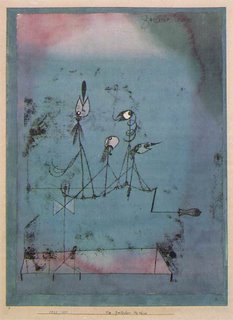drums, sting, etc.
When friends of mine who I know are good musicians affirm my love of Sting, it makes me really happy. Because the truth is, Sting is damn good, and people who hate on him just because he used to be in a band they like just aren't educated (or are dumb or have bad taste). The Police and Sting are not mutually exclusive. I repeat: The Police and Sting are not mutually exclusive.
I suppose I do see the point that Sting used to be somewhat of hard rocker and moved on to a significantly softer sound, leading some people to see him as pussified. But this would be similar to hating Bjork because she moved on from the Sugarcubes, which of course would be ridiculous, because it would fail to take into account the music she has created as a solo artist. I urge you, people, to listen to the music Sting has created as a solo artist, and I don't mean Fields of Gold (I mean Fields of Gold least of all).
A couple of weeks ago my friend Nadir, who is a fantastic drummer, was in New York and we hung out and listened to Ten Summoners' Tales like we did a long, long time ago and I got to watch Nadir use pencils to drum along with the album, with my mouth open the whole time like a big dork, 'cause both Nadir and the album are so good. If you don't own the album, you should because it's a masterpiece from beginning to end. Totally cohesive, tight lyrics and of course melodies, RIDICULOUS drums. So intricate. Yet subtle and not at all in your face. Here's the thing: it takes a grown up person who can let go of some pathetic concept of youthful hard rock to appreciate the drums on an album like Ten Summoners' Tales. In fact, many musicians are not capable of letting go of that concept, which is why they stagnate and become these fake, unartistic worshippers of youth who are just...pathetic. Evolution is key as an artist, and as a listener.
So today Nadir was back in New York and I watched him play with his new band, Justin King. They were aight. A little John Mayer-ish for my taste, but I just get so much joy out of watching good drums live. Nadir made a couple of the songs. They're lucky to have him in the band. Which is pretty much unrelated to the Sting topic, except that both involve really good drums.
I suppose I do see the point that Sting used to be somewhat of hard rocker and moved on to a significantly softer sound, leading some people to see him as pussified. But this would be similar to hating Bjork because she moved on from the Sugarcubes, which of course would be ridiculous, because it would fail to take into account the music she has created as a solo artist. I urge you, people, to listen to the music Sting has created as a solo artist, and I don't mean Fields of Gold (I mean Fields of Gold least of all).
A couple of weeks ago my friend Nadir, who is a fantastic drummer, was in New York and we hung out and listened to Ten Summoners' Tales like we did a long, long time ago and I got to watch Nadir use pencils to drum along with the album, with my mouth open the whole time like a big dork, 'cause both Nadir and the album are so good. If you don't own the album, you should because it's a masterpiece from beginning to end. Totally cohesive, tight lyrics and of course melodies, RIDICULOUS drums. So intricate. Yet subtle and not at all in your face. Here's the thing: it takes a grown up person who can let go of some pathetic concept of youthful hard rock to appreciate the drums on an album like Ten Summoners' Tales. In fact, many musicians are not capable of letting go of that concept, which is why they stagnate and become these fake, unartistic worshippers of youth who are just...pathetic. Evolution is key as an artist, and as a listener.
So today Nadir was back in New York and I watched him play with his new band, Justin King. They were aight. A little John Mayer-ish for my taste, but I just get so much joy out of watching good drums live. Nadir made a couple of the songs. They're lucky to have him in the band. Which is pretty much unrelated to the Sting topic, except that both involve really good drums.



